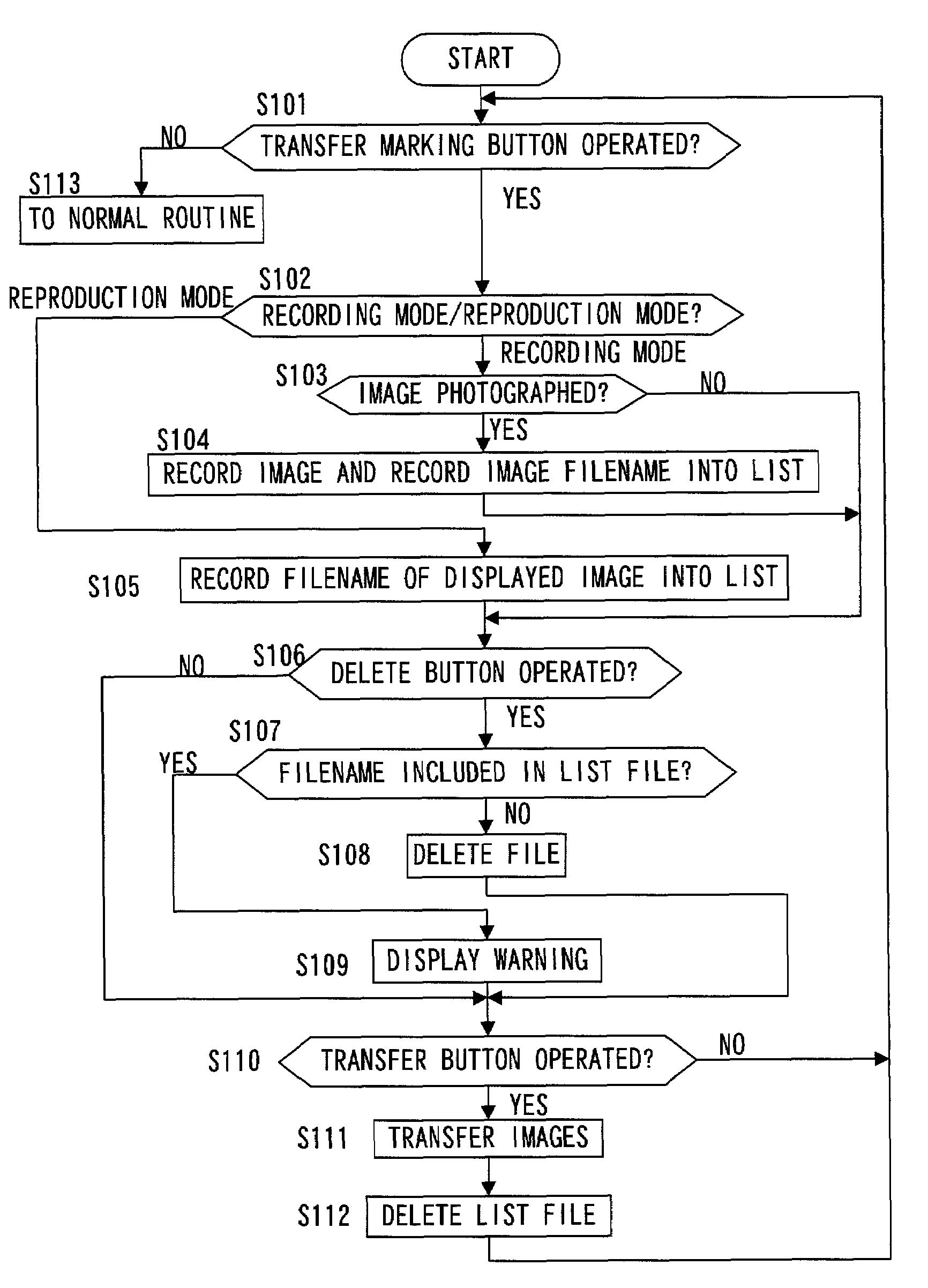Electronic image processing device and system for image data transfer operation
- Summary
- Abstract
- Description
- Claims
- Application Information
AI Technical Summary
Benefits of technology
Problems solved by technology
Method used
Image
Examples
first embodiment
[0043]The following is an explanation of the first embodiment of the electronic device and the electronic system according to the present invention, given in reference to the drawings. FIGS. 1A and 1B illustrate the electronic device achieved in the first embodiment. FIG. 1A is a plan view of an electronic camera 1 and FIG. 1B is a rear view of the electronic camera 1. As shown in FIG. 1A, at the upper surface of the electronic camera 1, a main switch 4 through which the power is turned on / off, a shutter release button 5 through which a photographing operation is executed and a display panel 7 at which camera information is displayed are provided.
[0044]The electronic camera 1 assumes a recording mode in which image data obtained by photographing a subject are recorded into a memory card 424 to be detailed later and a reproduction mode in which the image data recorded in the memory card 424 are read out and the image data thus read out are reproduced and displayed at a display LCD 3 ...
second embodiment
[0099]While the transfer marking is set by recording a filename 49 in the list file 47 in the first embodiment, tag information related to transfer marking is recorded in an image file 45 as additional information in the second embodiment. It is to be noted that the term “tag information” in this context refers to information that can be made to correlate to the image data contained in the image file 45. The PC 20 judges as to whether or not each image file 45 is appended with tag information and reads only image files 45 appended with the tag information into the PC 20.
[0100]FIG. 12 presents a flowchart similar to the flowchart in FIG. 8, showing the procedure of the processing starting with appending the transfer marking and ending with completing the image transfer. The same step numbers are assigned to steps in which processing identical to that in the flowchart in FIG. 8 is performed. The following explanation focuses on the procedure of processing that is different from that i...
third embodiment
[0110]FIG. 13 is a rear view of an electronic camera 1 achieved in the third embodiment. The plan view of the electronic camera 1 is identical to the plan view of the first embodiment presented in FIG. 1A. The transfer button 12 in the electronic camera in the third embodiment achieves both a transfer function and a marking function. When the USB communication cable 21 (see FIG. 15) is connected to the USB connector terminal 23, the transfer marking button 12A functions as a transfer button, and it functions as a marking button once the USB cable 21 is disengaged. An external power connector terminal15 is provided to allow an AC adapter (not shown) to be connected. A detection device 457 (see FIG. 14) detects whether or not the AC adapter is currently connected to the external power connector terminal 15. The USB connector terminal 23 and the external power connector terminal 15 are provided inside a cover 16. As the cover 16 is opened, the terminals 23 and 15 become exposed.
[0111]F...
PUM
 Login to View More
Login to View More Abstract
Description
Claims
Application Information
 Login to View More
Login to View More - R&D
- Intellectual Property
- Life Sciences
- Materials
- Tech Scout
- Unparalleled Data Quality
- Higher Quality Content
- 60% Fewer Hallucinations
Browse by: Latest US Patents, China's latest patents, Technical Efficacy Thesaurus, Application Domain, Technology Topic, Popular Technical Reports.
© 2025 PatSnap. All rights reserved.Legal|Privacy policy|Modern Slavery Act Transparency Statement|Sitemap|About US| Contact US: help@patsnap.com



